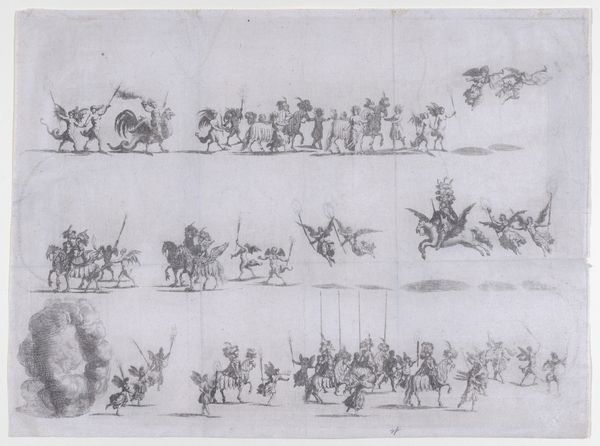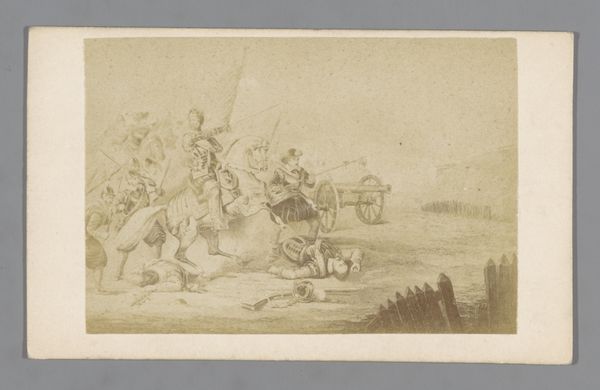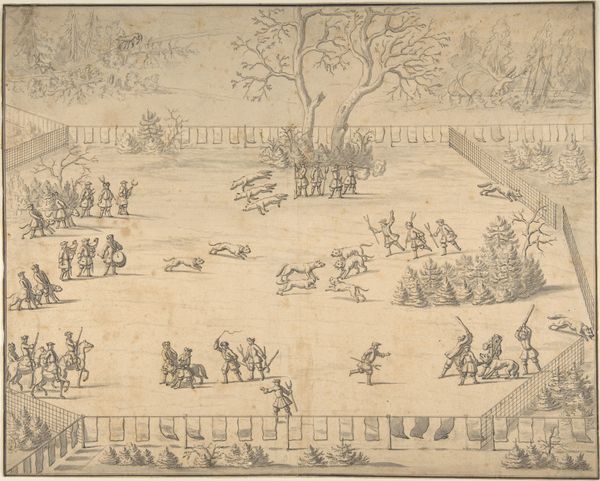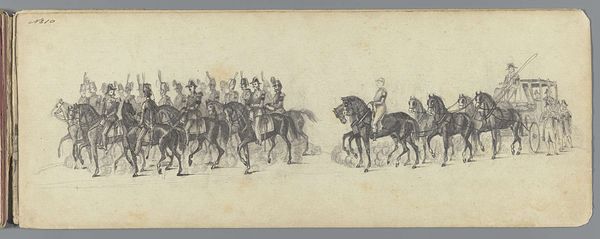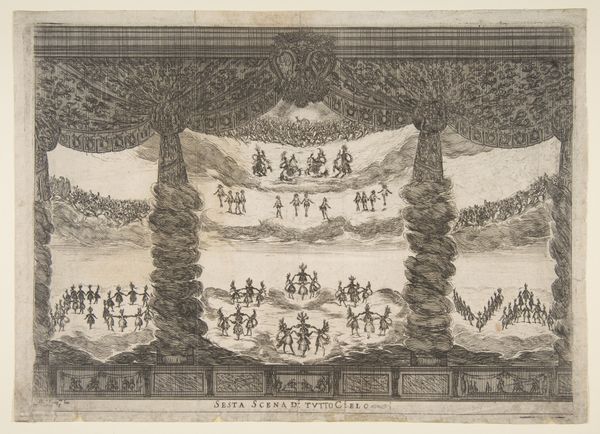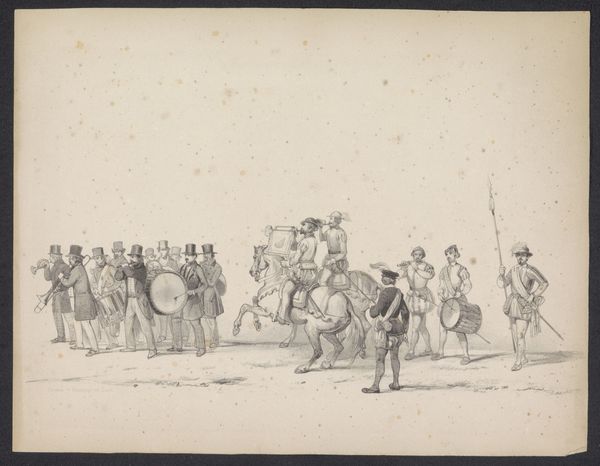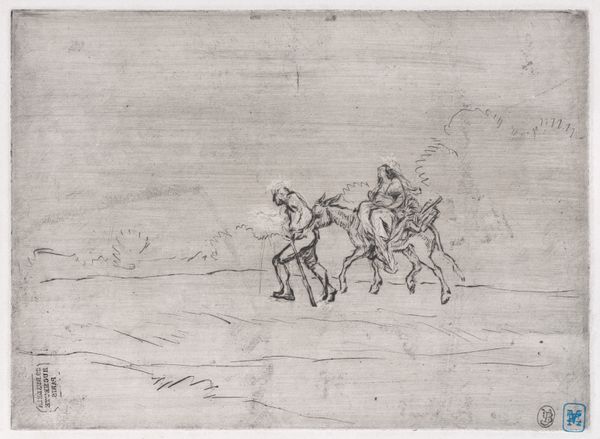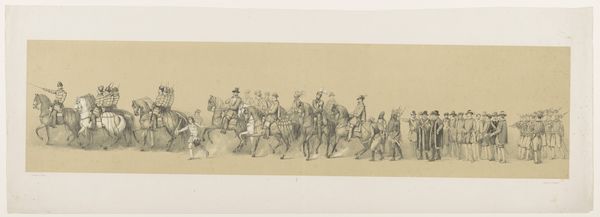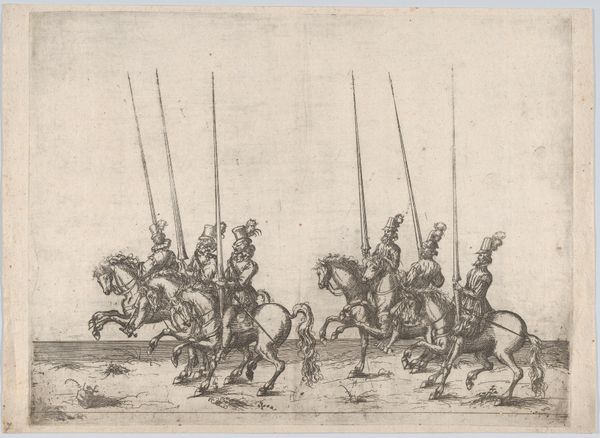
drawing, print, etching
#
drawing
#
narrative-art
#
baroque
# print
#
etching
#
landscape
#
figuration
#
history-painting
Dimensions: Sheet (Trimmed): 8 13/16 × 13 7/16 in. (22.4 × 34.1 cm)
Copyright: Public Domain
Curator: I’m immediately drawn to the whimsicality of this image. Editor: Indeed. This is Plate 7 from Pietro Paulo Bissari's "Antiopa," etched by Matthäus Küsel in 1662. Curator: It's fascinating. The procession is packed with symbols. Elephants, lions... is it alluding to some kind of power dynamic, a historical moment frozen in this rather intricate little dance? Editor: It’s the materiality that pulls me in. Imagine Küsel meticulously etching these fine lines into the metal plate, a repetitive labor translating power into a consumable image, easily disseminated as a print. These kinds of images were so crucial to broadcasting cultural ideas. Curator: Precisely! The etching captures more than just a spectacle; it’s the Baroque love of grandiose storytelling, the desire to impress through allegorical narrative. The lions are a reference to fortitude, the elephants to the East, each creature bearing its symbolic load. The scale feels intentionally reduced. Editor: Yet look closer: how meticulously rendered these creatures are! How does the relatively humble and mass produced form influence our reception? Etchings like this flattened experiences that may have been extremely exclusive and presented it to a wider public through reproductive media. Curator: Perhaps that flattening enables a deeper penetration into the cultural psyche? These weren’t mere illustrations, but emblems of identity, speaking volumes about the social fabric of 17th-century Europe, filtered through classical myth. Editor: Exactly. Every stage of that print’s life, from copper mining to dissemination, played a role in shaping meaning. What a complex image of social aspiration. Curator: Considering the visual language here, and its role in the wider cultural context of 17th-century visual symbolism gives it continued value, something more lasting beyond simply depicting power itself. Editor: It speaks of process and reception.
Comments
No comments
Be the first to comment and join the conversation on the ultimate creative platform.
